Out of the Box
the story of an Australian hero
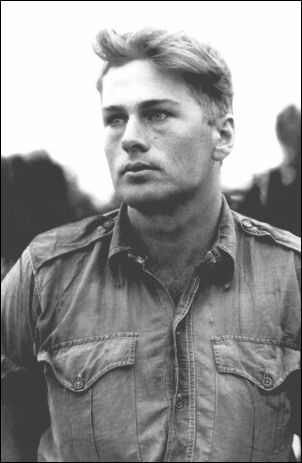
This is an oral history-based biography of Frank Partridge VC, by David Lowe.
Rising from poverty in the backblocks of northern NSW, Frank Partridge first became famous as WW II's youngest winner of the highest award for bravery, and again in the 1960s as Barry Jones' arch rival on the Pick-a-Box TV quiz.
His romance with Sydney nurse Barbara Dunlop and his mysterious, early death touched the hearts of millions of Australians. Boy genius, soldier, farmer, quiz champion, lover, father, politician, insurance salesman, friend, idol – Frank Partridge was all of these things.
His amazing story is told through the words of those who shared his experiences, comprehensively illustrated. Personal letters and other never-before published archival material complete the picture of this fascinating, complex and contradictory figure.
AUTHOR:
A graduate of the Australian Film Television and Radio School, David Lowe has written for film, television and interactive media. He has won prizes for his short stories and short films, which have screened around the world. David is the author of Forgotten Rebels: Black Australians Who Fought Back (Permanent Press, 1994). Other works dealing with Australian history include Odd Man Out: the Story of Ronald Ryan, Riot Acts: the History of Australian Rioting, and Thunderbolt's Lady. Please see David's CV for further information.
PRÉCIS:
Out of the Box: the Story of an Australian Hero is the product of five years research and over one hundred oral history interviews. The structure is a blend of straightforward chronology and theme, woven together using techniques borrowed from film-making, oral history and traditional biography. After an introduction which explains some of the trials and tribulations of the research journey, and sets out the broad canvas of Frank Partridge's life story, the book is divided into eight large chapters. These are broken up with many photographs, adding depth and meaning to the narrative.
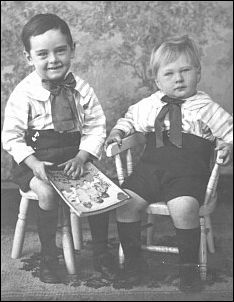
'Beginnings: Living to Learn' briefly discusses the Partridge family's origins, from ancient times through to pioneering life on the land, and Frank's father and uncles who went to World War I. Only one returned, Frank's father Paddy, a tough, hard-drinking bushie. Paddy met Mary, Frank's elegant and demure mother, in London, and brought her back to the Nambucca Valley, on the mid-north coast of NSW. There she faced religious intolerance, loneliness and the death of their first baby.
Following his birth in Grafton in 1924, Frank was educated with his brothers and sister at a tiny bush school, where his extraordinary memory was first noticed. Despite his academic promise, Frank left school at thirteen. He joined his father on their small banana plantation, where they struggled to support the family. Always a shy boy, Frank was kept at home by his mother, educating himself by the light of a kerosene lamp, until the maelstrom of World War II caught up with the family and he was conscripted at eighteen.
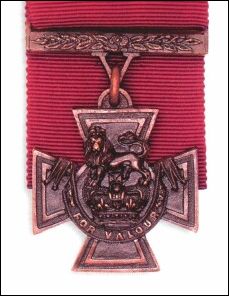
'Valour: Learning to Kill' explores Frank's experiences training for battle against the Japanese, at hellish camps including Bathurst, Canungra and Kairi, described by one fellow recruit as 'worse than the bloody war!' Frank eventually became a 'choco' or 'chocolate soldier' – slang for a militia recruit. These were the poor cousins of the AIF, young men who were supposedly homeland defenders but who were called upon to fight alongside senior troops in battlefields such as Kokoda.
Frank's transformation from a bookish young man with questionable hygiene and a 'funny bushie voice' into a fully-fledged Imperial war hero is explained via a detailed examination of the action which won him the Victoria Cross. This happened on Bougainville Island in the last gasp of the war. The story has as many versions as there are tellers, each illuminating in different ways.
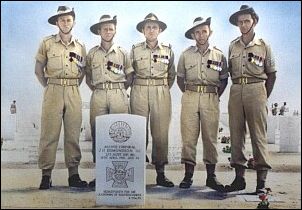
'Mother Country: Killing to Climb' shows Frank Partridge enjoying the fruits of his newfound fame as he's catapulted into a world of kings, prime ministers and movie stars. The hard life on the banana plantation is counterpointed with opulence abroad, and hero status in his own country. By the end of the chapter there's a wax effigy of Frank in London's Madame Tussaud's – 'the quintessential Australian digger' – and he's met the love of his life, Sydney nurse Barbara Dunlop.
Unfortunately for Frank, the admiration wasn't mutual. His refusal to wear socks, as well as other eccentricities and character flaws, seemed to present insuperable obstacles to the romance. A fascinating series of letters from Frank to Barbara present a unique window into this relationship.
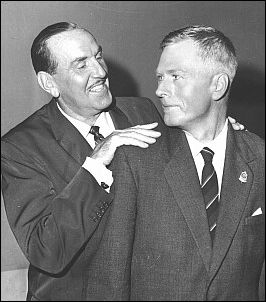
'Show Business: Climbing to Love' tells the story of another startling transformation, as Frank attempted to use the hit prime time TV/radio quiz show Pick-a-Box to win the heart of his beloved. Through a series of contests in 1962, Frank Partridge, the uneducated boy from the bush, now prematurely grey and in his thirties, defeated a series of contenders and accumulated an enormous stash of prizes, becoming, in Dolly Dyer's words, the show's 'most popular' contestant, as he came within a whisker of defeating grand champion Barry Jones.
Still living at home with his father, like Dad and Dave, and with no electricity to plug in his prizes, Frank Partridge became the focus of intense media attention. This was further heightened with the announcement on Pick-a-Box that he would marry his 'beloved blonde', city girl Barbara Dunlop.
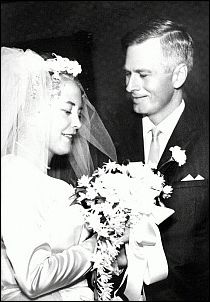
'Fairy Tale: Loving to Dream' examines the vastly different private and public faces of Frank and Barbara's relationship, from their engagement, society marriage (attended by thousands in Sydney), reception at the Hotel Australia and honeymoon across the South Pacific to America, all under the watchful eye of Uncle Bob Dyer and his legions of fans. Barbara, a severe diabetic, became pregnant in San Francisco.
A series of letters written by Barbara to her parents in Sydney, and from Frank to his friend and unofficial manager Alan Zammit, reveal the cracks in the 'fairy tale' relationship widening to chasms. Once home, Frank and Barbara immediately separated and returned to their separate lives. With the support of Bob Dyer and the Australian media machine, Frank embarked on a plan to sell his Pick-a-Box prizes to build a dream home on the remote property where he had spent his life.
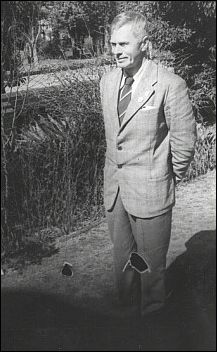
'Politics: Dreaming to Change' tells the story of Frank's fight with his own beloved Country Party to become a Federal candidate. With the Menzies Government on a knife edge electorally, they were taking no chances. Frank was rolled, but lent his name to the campaign of his opponent, hoping for a Senate seat in the future.
Barbara's pregnancy advanced as the battle to complete the dream home became Sisyphean; Frank competed with severe weather, a dwindling back balance and a growing suspicion that Barbara didn't share his concept of marriage, while simultaneously attempting to advance his political prospects with the leaders of the day. Two days after the Menzies Government was returned with an increased majority, Barbara gave birth to a healthy baby boy in Sydney, Lachlann.
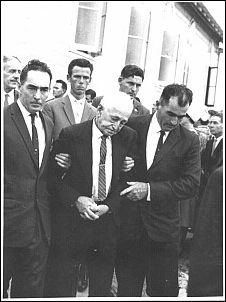
'Tragedy: Changing to Die' takes the reader through the whirlwind of events at the end of Frank Partridge's life; the christening of Lachlann, the Legacy portrait, the continuing absence of Barbara, the decision to become an insurance salesman to find money to finish the house, and the afternoon in March 1964 when Frank's VW Beetle crossed the road and collided with a timber jinker near Bellingen.
Frank's shocking death and huge military funeral 'stopped everyone in their tracks' and returned him to the front pages around Australia, but the inquest which followed left many unanswered questions and dark mutterings in the Nambucca and elsewhere. Some blamed Barbara, some Bob Dyer, some the car. For some it was a case of 'burning the candle at both ends'; for others it was an obvious suicide.
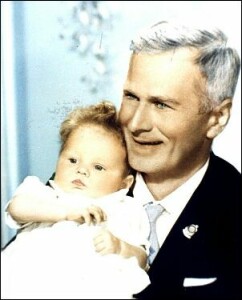
Completing the cycle, 'Legacy: Dying to Live' explores the aftermath of Frank Partridge's meteoric life; the memorials, the people who were left behind, the surprising career of Lachlann Partridge as a media-savvy radical activist, the fate of the VC. Why has such an archetypal Australian hero been largely forgotten?
For the curious, Appendix I includes information about the interviewees, including photos. Appendix II is a timeline of important events. Appendix III is a partial bibliography of Frank Partridge's personal library, providing further insights into this unusual personality.
Out of the Box is a book about celebrity, obsession, love, knowledge, violence and heroism. It's about the great forces which have shaped Australia in the twentieth century. Like a novel, it offers glimpses into the inner lives of its characters, but is grounded firmly in evidence. Through the prism of a remarkable man's life, one which crossed many boundaries, it attempts to help us understand who we were and who we are.
The manuscript, complete with illustrations, is available now to potential publishers and other interested parties on hard copy and CD.
Please contact David's agent, Belinda Maxwell, at ICS and Associates, Sydney Australia, or David Lowe directly, if you require further information about Out of the Box.

